Typeset in Minion by Keystone Typesetting, Inc.
Library of Congress Cataloging-in-Publication data and republication acknowledgments appear on the last printed pages of this book.
Dedication
This book is dedicated to the cherished memory of three incomparable teachers, mentors, friends: Kostas Kazazis, David Schneider, and James Spradley, each of whom has had lasting influences on me and my work.
It is also dedicated to my parents, who have shown unending concern and love. I only wish that my late mother, Lois Silvertrust Mandel, were able to take pleasure in its publication. Richard and Joan Mandel have been unlimited and gracious in their enthusiasm, interest, and support, for which I will always be grateful.
List of Illustrations
Preface and Acknowledgments
It took myriad individuals, villages, and institutions to raise this book. The villagesfrom urban neighborhoods and homes, to Anatolian hamlets, to Eastern European transit routesportrayed in these pages contain the amorphous stuff of anthropological fieldwork. The fieldwork was shaped by circuitous and lengthy pathways, replete with countless detours in the peregrinations. My routes through these often unconventional fields described a patchworked sensorium: the years in Turkey and Germany were punctuated by ongoing conversations with migrants, sharing flats with some of them, enduring cloudy smoke and painful fatigue, making exhilarating discoveries, and developing cherished intimacies. It entailed endless hours of simply hanging out, watching and waiting for nothing or something to happen; loitering at demonstrations, markets, mosques, street corners, playgrounds, cafes, and grocers; being squeezed into many an ancient Istanbul dolmu seemingly held together with rubber bands and prayer, propelled by liquid petroleum aygaz bombs in the boot. Fieldwork meant the myriad trips through the Bosphorus, suspended between continents, providing the consummate antidote to the stimulations and trials of quotidian Istanbul; the distinctive smell and sight of coal dust on Berlins snowy winter streets that never quite reached full daylight; finding refuge in Kachelofen-infused cold-water flats, whose primary olfactory memory is smoky coal fused with simmering mutton. Collections of saved articles, pamphlets, reports, statistics, brochures, flyers, and concert programs had to be distilled into a mere handful of references mentioned in this book. Countless scraps of semi-legible scrawls complement the stacks of filled notebooks, carbon-copied typed notes, floppy disks, and random thoughts and snippets that only years later developed into fully digested patterns and meanings.
All this relied on meeting scores of people, and in an array of contexts. Many generously invited me into their homes, tolerated my questions and observations, as they shared food, drink, rituals, hopes, disappointments, and confidences. Without these people, necessarily nameless here, I could not have written this book. I only hope I have portrayed the excerpts of their lives in a manner consistent with their visions. Above all, to Derman, the late Hdr, Adil, Nurcan and other Arslans, I owe endless sayg ve sevgi, gratitude, respect, and love.
MEANDERING TRAJECTORIES
As I am continually asked how I came to this particular configuration of topics, exploring transnational and historical links between Greeks, Turks, Kurds, Germans, and Jews, it may be useful to chart the chronological and intellectual contours of its trajectory. After several years immersed in Modern Greek studies, I initially assumed I would carry out conventional ethnographic field work in Greece. An undergraduate semester in Athens had spurred my interest in the Black Sea Pontic minority, and I considered working in a Pontic area. However, while studying Greek grammar and literature at the University of Chicago, under the exacting tutelage of the Balkan linguist Kostas Kazazis, I began to see Greece in its wider Balkan context, as he regaled me with more information than I thought possible about this region, from its syntaxes and folklore to its political history and humor. A minor detour, taken thanks to Leften Stavrianos, led me into Albanian. A generous host, inspiring mentor, preeminent Balkanist and swimmer in frigid waters, Lefty encouraged me to expand my research purview to include Albanian; we sketched out a Ph.D. project on the Greek-Albanian borderlands. This plan was short-lived, as the closest I was able to get in the 1980s was Kosova, where I spent a fascinating summer studying Albanian in Peje, thanks to a Yugoslav Government Grant for Albanian Studies.
The more deeply I delved into Greek anthropology, the more evident it was that a great deal of what constituted Greekness was its highly charged structural opposition to Turkishness. Lest I adopt too much of this emotionally laden perspective, and unwilling to have Turkishness mediated solely through neo-Hellenic eyes, I decided to take on Turkish as a second field and language area. At this juncture in my studies, Danny Danforth and Michael Herzfeld, the two young turks of Modern Greek studies at the time, enthusiastically supported my decision, unlike some colleagues who saw it as a defection to the enemy camp. I am grateful to Danny and Michael for their encouragement, quite important to a young, insecure graduate student. My subsequent doctoral project, designed to transpose parts of the failed Albanian-Greek venture, would address issues of identity, ethnicity, and history by comparing Turkeys Greek minority with the Turkish minority in northern Greece. To that end, after a year studying Turkish in Chicago, I had the good fortune to receive a Fulbright grant for preliminary research in Istanbul. There, I carried out a pilot study of the Greek community and dipped into northern Greek waters as well. It quickly became clear that research permission to study this sensitive minority near two troublesome international borders would not be forthcoming. Moreover, on the other side of the border, Istanbuls once enormous Greek population was so diminishedonly a couple thousand remainedthat it would have been an ethnographic account of a vanished community.
Fortuitously, that year I attended a conference in West Berlin, a trip that had a profound impact, inspiring me to redirect my research. Staying in Kreuzberg, I was overcome by the intensity of Greekness and Turkishness deracinated and recontextualized, once removed. Since then, I have not looked back (only sideways, to Central Asia; but thats another story), and this book represents my encounters over two and a half decades with migrants, returnees, and natives of many types. To complete the chronology: after the year in Istanbul, I returned to Chicago to reconfigure my doctoral project. It became a project meant to explore changes in Turkish and Greek representations of self and other in Germany, and the subsequent consequences of repatriation. The following three years were divided between Turkey and Germany (with numerous forays into Greece), generously supported by Fulbright-Hayes and daad (German Academic Exchange Service). While in Berlin I was fortunate to meet Mirjiana Morokvai-Mller, who incorporated me into her research on migrants in the European garment trade. As part of her larger, comparative project, I carried out research in Paris and Berlin, among Turkish garment workers in Parisian sweatshops and


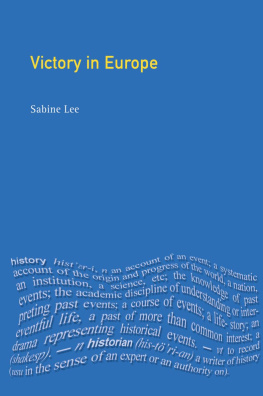
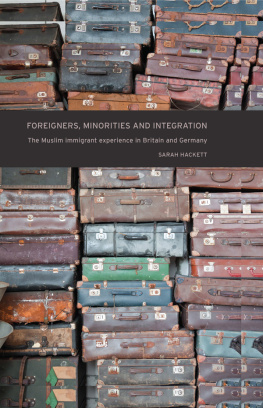
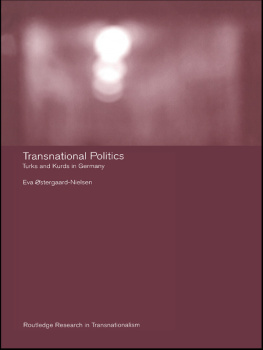
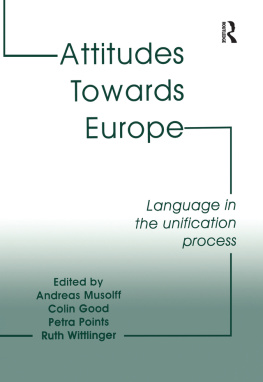
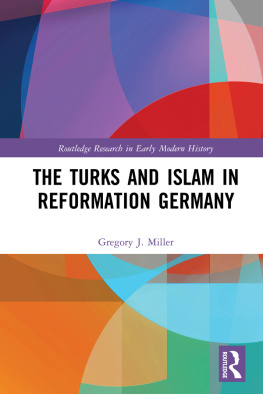



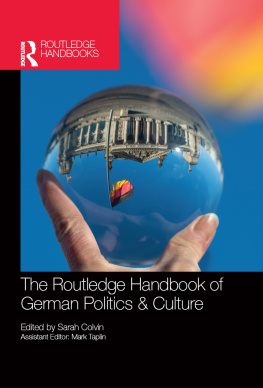


 Duke University Press
Duke University Press